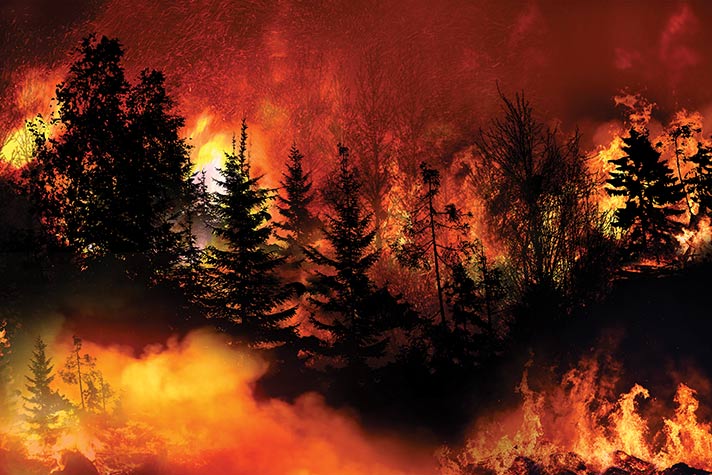On Real Estate & More – August 2022
One of the most important bills passed by the 2021 Oregon legislature was Senate Bill 762, which makes extensive changes to Oregon wildfire policy, affecting how the state responds to wildfires and potentially requiring property owners make modifications to their property to lower their wildfire risk.
Unlike before, where regulations on property uses relating to wildfire were the primary responsibility of counties, SB 762 shifts control from local governments to four primary state agencies—the Oregon Department of Forestry (ODF), Oregon State Fire Marshal (OSFM), the Oregon Department of Land Conservation and Development (DLCD), and the Oregon Department of Consumer and Business Services (DCBS). SB 762 gives each agency a new role in shaping wildfire policy as it relates to private property.
Under the bill, ODF oversees creating a statewide map of wildfire risk. This map will serve as the state’s map for all wildfire risk efforts. ODF was directed to map every Oregon parcel and assign a wildfire risk to the property. The map was released to the public on June 30th and classifies all individual properties statewide into one of five categories of wildfire risk ranging from “no risk” to “extreme.”
Oregonians can input their address to check the classification of their property and any new requirements that may be applicable. The state will also provide written notice on July 15th to owners whose property is within the danger zone and classified as high or extreme risk and inform them how to find information on the new requirements or how to appeal a property’s classification.
About half of the 1.8 million tax lots in the state are now categorized as being part of the “wildland-urban interface.” It’s a designation for homes and communities that are more vulnerable to wildfire because they are intermingled with forestland and wilderness areas.
Depending on how the requirements are enforced and funded, the effort could reduce risks to lives and property. The state and federal government are both putting money behind those efforts, accessible to property owners. But among owners of rural properties who are both within the wildland-urban interface and classified as having high or extreme fire risk, the new rules could be controversial.
The broad definition of the wildland-urban interface includes areas where homes and communities meet forest lands, grasslands and rangelands with sufficient flammable vegetation to feed big wildfires. The property-level risk classifications are based on a range of wildfire hazard factors in specific areas, including climate, fire history and topography, the likely fire intensity and resulting consequences to structures.
The related codes and requirements are under development now by the state’s Building Codes Division and the Office of the State Fire Marshal and will kick-in next year. The DLCD is also directed to make recommendations this fall on changes to statewide land use planning. The agency hasn’t revealed those yet, but they could include additional defensible space provisions or possibly limits on new development in wildfire-prone areas. The new rules will apply to about 120,000 properties, about 8% of all tax lots statewide—that are both inside the wildland-urban interface and labeled as having high or extreme fire risk.
The wildfire risk map was developed by the Forestry Department and Oregon State University. The definition of the interface and the risk map criteria were hashed out by a 26-member rules advisory committee that included representatives of counties and cities, tribal groups, rural fire protection districts, home builders, property owners’ associations as well as the Oregon Farm Bureau and Oregon Forest Industries Council.
Property owners or local governments may appeal their property’s risk classification within 60 days of being notified of a property’s risk classification through ODF.

 Sandy J. Brown lives in Jacksonville and is a real estate broker and land use planner with Windermere Van Vleet Jacksonville. She can be reached at sandyjbrown@windermere.com or 831-588-8204.
Sandy J. Brown lives in Jacksonville and is a real estate broker and land use planner with Windermere Van Vleet Jacksonville. She can be reached at sandyjbrown@windermere.com or 831-588-8204.